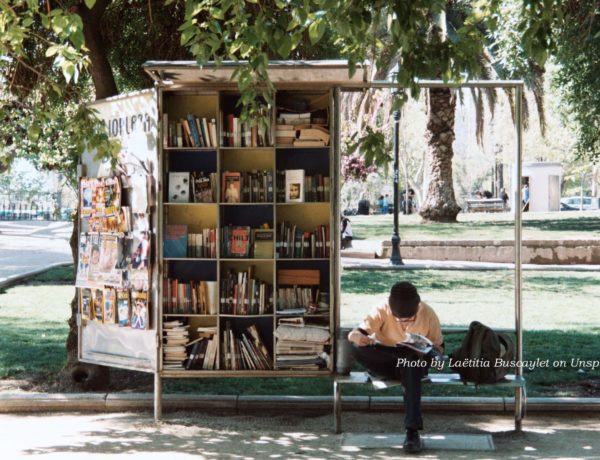Originally published January 28, 2013
In continuation of this miniseries I interviewed a slightly different sort of author, one who writes for children. Sharon L Norris writes children’s books in order to wrap a story around some fun fact from the sciences. Here are her responses to my areas of interest. I have left her delightful Australian spelling and usage as written.
Does your research drive your story; or does your story shape your research?
The concept for my children’s early reader book ‘The Blink-off’ was derived from reading a Little Golden Book on ‘cats’. It mentioned that cats did not blink. I then started researching this phenomenon and found that cats do blink, but not very often. They have a third eyelid, a clear one that covers the pupil and keeps out dust and dirt. This means they do not blink as often as humans do. I was fascinated by this concept and developed a story for early readers around it.
Research was paramount in driving my mid-grade novel ‘The Balloonatic’, published by Macmillan Education Australia. This story, about a young boy who loves hot air ballooning and has to land a balloon when the pilot collapses in mid-flight, required significant research on the subject of ballooning. In the research process, where I learned about the dynamics of flight, I found some wonderfully illustrated books that gave me ideas for the landing scenario in this novel.
How do you keep yourself informed of new developments in the scientific fields?
I am currently writing a YA novel set in the future so I am using the internet to find blogs, pages and discussion fora so I can remain up to date with particular things like weaponry, military behaviour and strategy – things I know little about personally. I am also considering a sequel to ‘The Balloonatic!’ and am expanding my knowledge of modern hot air ballooning.
Do you try to shape your stories around hard science; or do you ignore or reach beyond what is known into the possible, or probable; or does it matter?
I specialise in writing for educational markets and the success of ‘The Blink-off’ has encouraged me to continue to explore scientific concepts in fiction for early readers. The language that needs to be used for early readers can sometimes limit what you write. Abstract thoughts and concepts are not encouraged in early literacy materials as they are often too difficult for young children to understand.
What sorts of things inspire your interest to seek more information?
As a children’s writer, I’m fascinated by the natural environment and how things work. The smallest thing can be of great interest to young children, but they need to clearly understand and make connections in order to make sense of what you’re trying to tell them. Researching topics young children find fascinating is part of my job as a children’s writer.
What sorts of things tend to spark the idea of a story?
I’m an avid people-watcher. When I’m on a bus or sitting on a park bench I discreetly take note of everything around me and what people are doing. How children interact with each other and with older people. How they speak and what they say. Riding the bus has given me so many ideas just from hearing people’s conversations. I don’t strain to eavesdrop–buses are noisy so passengers will naturally talk louder to be heard. They just don’t realize how far their voices carry!
The media is also another source of story ideas for me. Reports of real life events, people, places and things will spark story ideas that I then elaborate or embellish. My mid-grade novel ‘Finders Keepers’ was sparked by a media report about children who found a dinosaur egg in sand dunes and hid it when the Government tried to take it away from them. In my story, the two child protagonists find and then hide their dinosaur egg when a greedy uncle tries to sell it to the highest bidder. They end up donating the egg to a museum so it would belong to everyone.
Do you often have characters in mind and find yourself in search of a scientific background to suit their character and its development?
I once imagined what the late Crocodile Hunter, Steve Irwin, was like as a boy. He was alive then and I could just imagine him as a little boy running amok on his parents’ wildlife reserve (which later became the iconic Australia Zoo). I developed a boy character I imagined was very like Steve Irwin as a child, and thus was born my short novel for early-fluent readers titled ‘The Croc Shock’. This novel chronicles the adventures of Jack Sherman, who lives on a wildlife reserve and takes a baby saltwater crocodile to school for Show and Tell Day (or Show and Crow Day as it’s called in the book). When fear and ignorance about the crocodile threaten to get Jack into a lot of trouble, he gives his Show and Tell talk to the entire school to educate them. In the process, the reader learns a lot of scientific facts about ‘salties’.
Do you like to teach science with your writing and if so, is it your only goal or do you just have a lot of fun playing with the ideas that scientific theory presents?
I challenge myself to take a concept that interests me and look for an ‘angle’ I can explore, just as journalists look for the angle they will take when they write their stories for newspapers and magazines. There is always a lot of fun in this process.
Do you see correlations between scientific theory as it develops and your own philosophy or world view?
I learn a lot from the research process and from critically evaluating the research. I feel this can only stimulate my development as a writer and mean a better story for the reader.
Does this perspective become part of your characters’ development, or just background?
It’s important that child characters in children’s books solve their problems or dilemmas with as little help from adults as possible. So for me, it is important to ensure that I can suspend disbelief so my child readers know their protagonists can achieve the impossible if that is needed to solve a problem or dilemma.
In ‘The Balloonatic!’, for example, my character Monty is a walking, talking encyclopaedia on hot air ballooning but he has never actually flown in a balloon until he receives a gift certificate on his birthday for a dawn flight. When the pilot collapses in mid-flight, Monty has to use every ounce of knowledge he has to bring the balloon down safely as three lives depend on it.
What is your most favorite, wonder, awe-inspiring thing that you have learned in the last few years? Something that confirmed or changed your point of view of the world and all that is in it?
I am intrigued by the fact that despite the wide-reaching arm of technology and development across the globe, we continue to hear that there are newly discovered tribes living traditional lives in remote parts of the world. People living in complete harmony with their environment, and damaging it a lot less than many of us living in highly developed, technologically proficient societies in first-world countries. There is a fantastic eco-message in that for all of us.
What is your favorite writing project which involved research into the sciences?
I have completed another mid-grade novel (unpublished at this time), which involved researching magnetism. I found out many interesting things about magnets and magnetism and this helped inform the plot and the development of my character, Eric. It was a lot of fun finding ways to incorporate those things into the story.
Sharon L Norris lives in Brisbane, Australia, and is the author of four books for children published in educational markets in Australia, New Zealand, South Korea, Singapore and the United States. Her motto is ‘take the ordinary within you and make it extraordinary’, and feels this is the perfect inspiration for a children’s writer. You can find out more about Sharon’s work via her website at www.sharonlnorris.com.au, and can follow her on Facebook at www.facebook.com/SharonLNorrisAuthor




No Comments